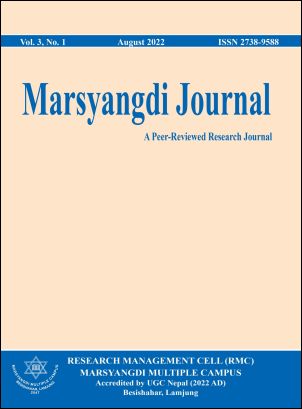Rebuilding Identities amidst the Cultural Trauma in “Pali”
DOI:
https://doi.org/10.3126/mj.v3i1.47956Keywords:
ethics, fanaticism, identity, morality, partition, rebuilding communities, traumaAbstract
The Indo-Pak partition of 1947 has not only invaded the physical space by making two independent nations - secular India and Islamic Pakistan - creating a demarcation between Hindus and Muslims but also intruded upon their psychological space tearing and ripping off their mindsets with the clear division of cultural identities between the two. This paper examines critically how the aesthetics of art employed in the story “Pali” does full justice in distributing the equal burden of trauma on both the parties- Hindus and Muslims-to arouse a special affect in the minds of readers in the post-partition of 1947. Such affect is quintessential and very meaningful while reshaping and rebuilding the identities in the community to reconcile with peace and harmony. It also examines how the shadow of an individual trauma falls on communal families and then on the society caused by the handful of bigshots-Maulvi and Chaudhri for their identity politics. The story spins around the little boy, who was lost in Pakistan during the partition riots, got separated from the Hindu family, lived with the childless Muslim couple, and was restored to the Hindu family eventually. It portrays the sufferings of both the child-Pali Yashpal and his parents due to communal superiority and religious fanaticism. “Pali” by Bhisam Sahni can be analyzed in the light of trauma art - the trauma of the partition, traumatic experience of religious conversion, identity politics, morality, and ethical concern.




